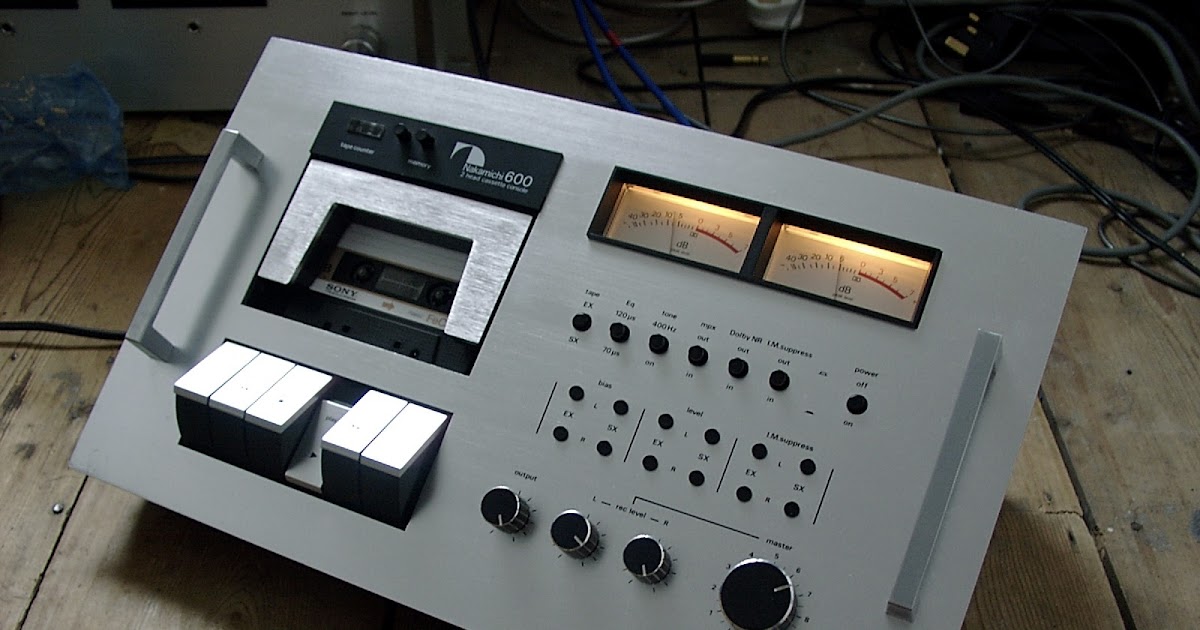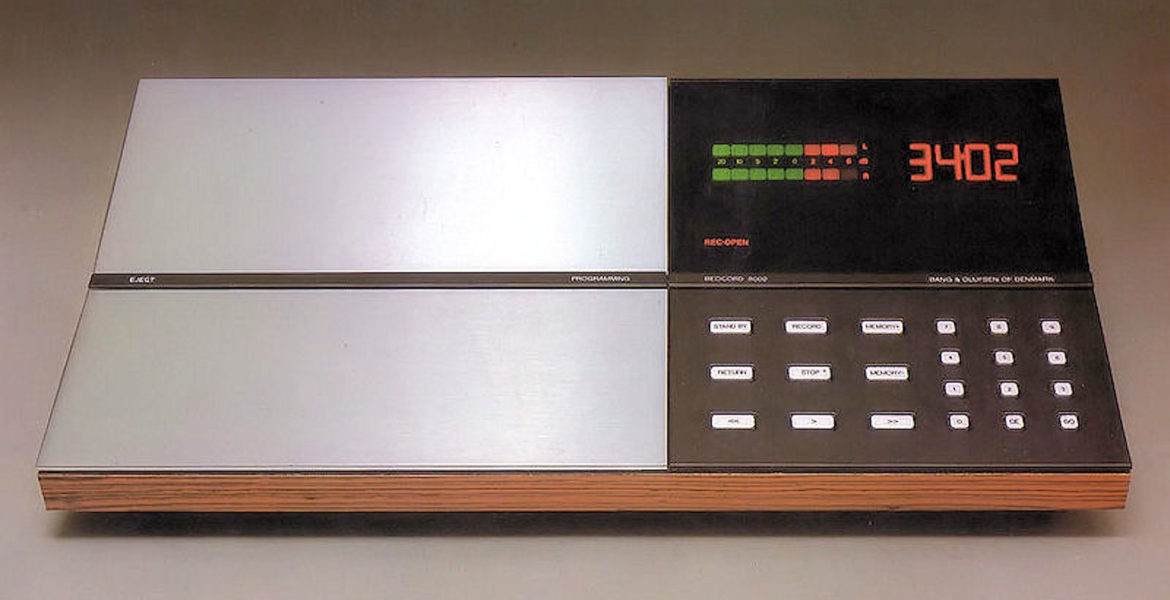Etsuro Nakamichi, a tape magnetics research engineer, created the Nakamichi Corporation in Japan in 1948. In 1951, he began creating open reel decks for other hi-fi businesses to put their own badges on, as he was captivated by tape. It was a difficult business to be in, needing tight tolerances and precise alignment, as well as big volumes, which most businesses couldn’t handle. However, Etsuro was not satisfied with this, and his organization continued to look for new ways to improve performance. The firm made a key breakthrough in 1957 when it developed a tape head that could reproduce sound from 20Hz to 20kHz, and this set the tone for the company’s subsequent products. For decades, Nakamichi’s capacity to manufacture its own high-quality bespoke tape heads set the company apart from its competitors.
With the 700, Nakamichi began producing cassette recorders for itself in 1972, after spending the 1960s making outstanding OEM machines. It was a fantastic product, but the company’s name was relatively unknown in the marketplace, and it struggled to find economic success. OEM work was aggressively pursued by the corporation, and it proved to be a lucrative way of selling its core technology. Few Japanese (and even foreign) manufacturers had the engineering know-how to develop their own hi-fi cassette decks at the time, therefore many approached Nakamichi. The Advent 200, Fisher RC-70/80, Goodmans SCD100, Harman Kardon HK1000 and HK2000, Sansui SC-700, Sonab C 500, Thorn DCR1 and Wharfedale 20D were just a few of the machines that used the same Nakamichi 500 chassis up until 1975. The Concord MK7, Elac CD520, Leak 2002, and Yamaha TB-700 all used the same internals as the next-generation Nakamichi 550.
This was a low-cost and simple way for hi-fi firms to break into the fast expanding cassette industry. There was no guilt in it, though, because the machines Nakamichi sold to the OEM market were better engineered than the majority of in-house designs at the time. The Nakamichi-made Sonab featured a wow and flutter figure of 0.13 percent (peak weighted) and a 30-16,000Hz frequency response (+/-3dB) to give you an idea of the quality the firm could produce. With Ferric and Dolby turned off, the signal-to-noise ratio was 51dB, and with Chrome and Dolby turned on, it was 60dB. By today’s standards, this was excellent; Sony’s budget designs from five years later struggled to match these specifications. Simultaneously, the company released its own cassette decks. Returning to its own brand, Nakamichi introduced the 1000, an adventurous new high-end model. The succeeding 600 – a handsome’ski-slope’ design that really put it on the map in 1974 – cemented the brand’s reputation. The business was gaining a reputation as a manufacturer in its own right.
Bowers & Wilkins Ltd. signed a deal with Nakamichi to distribute their loudspeakers in Japan about this time. As a result, B&W’s John Bowers rapidly developed a connection with business president Niro Nakamichi, and the two companies agreed to sell their decks in the UK the following year. Nakamichi B&W UK Ltd was formed as a joint-venture business, with Niro and Osamu Nakamichi as Japanese directors and John Bowers and Paul Wilkins as UK directors. “Nakamichi’s cassette decks were created with a design philosophy of ‘performance first, convenience second,'” Paul Wilkins once said. Other factors were usually pushed aside in favor of sonic performance.”
The business then released its first range of modern front loading machines, the 580 and 680 series, as well as the 480 economy range, after updating the 1000 and 700 (MK II variants). By 1979, the corporation had an even more modern line-up that was far more slick to use than its items from just a few years prior. The high-end ZX-7 arrived in 1981 with discrete three-head technology – three heads that are physically, electrically, and magnetically independent, allowing accurate individual alignment for optimum results – and Nakamichi’s dual capstan “asymmetrical diffused resonance transport,” which offered excellent speed stability while minimizing head-to-tape contact irregularities. A pad lifter was installed on the play head to lift the cassette tape pressure pad off the head, decreasing “scrape flutter” and allowing the transport to manage tape tension and head-to-tape contact. The ZX-7 was perhaps the first outstanding, fully rounded, flagship Nakamichi – but its astronomical price tag (over £500) necessitated the creation of a brilliant affordable line…
Enter the BX-series, which aimed to reduce Nakamichi values to something more accessible to a wider audience. Despite this, it was still as pricey as the flagship high-end designs of most brands. The BX-150 you see here evolved from the 1992 BX-2, a gorgeous front-loader with vertical LED peak program meters, vertical level sliders, and Dolby B and C, allowing for a significantly improved signal-to-noise ratio. The BX-1 was the first Dolby B-only model, and subsequently Nakamichi improved it with the BX-100, BX-125, BX-150, and BX-300, all with updated functionality and slight adjustments. The 150 was the top model in the company’s basic range in 1984, selling for £400. It oozed class and had superb performance.
Thanks to a microprocessor-controlled single-capstan transport, the manufacturer promised “extreme transport precision with remarkably little flutter.” The company installed a bespoke Nakamichi Sendust laminate core record/playback head, which “rivals the performance of a superior Nakamichi discrete 3 head system,” according to the company. It was a highly sophisticated product by any other manufacturer’s standards, only being outclassed by the ZX-7. It achieved a frequency response of 20-20,000Hz (-3dB) with the new-fangled metal tape, a signal-to-noise ratio of 68dB (with Dolby C), and overall harmonic distortion of just 1%. Even by today’s standards, this was top-of-the-line cassette equipment.
The BX-150 was meticulously designed to be straightforward, free of frills, and simple to operate. It didn’t have a lot of tape calibration capabilities; instead, your supplying dealer would set up the deck for the tapes you wanted to use. However, once properly calibrated, the Nakamichi was capable of excellent performance on par with high-end machines. It was also delightfully tiny, measuring 430x110x250mm and weighing only 5.5kg; it wasn’t a giant. The machine’s front was clean, and it had everything you needed to create a great recording: Dolby B and C, a switchable MPX filter, a great set of LED metres, and full logic control. Fancy track search, auto-reverse, and other frills were omitted in order to provide the best basic performance feasible for the price. A dual speed master recording level fader and an auto repeat feature were the sole extras.
A well-maintained BX-150 functions admirably in usage. The tape drive is practically silent, the logic control is flawless, and the computer is a joy to use. The Nakamichi can record metal tape at very high levels (+6dB or more) without distortion, allowing it to take advantage of the best tape formulations while also sounding surprisingly decent with plain old TDK D. There’s no denying the brand’s impeccable lineage, even if the deck lacks many of the ‘bells and whistles’ of its time’s price competitors. Despite the fact that several of these competitors used technological gimmicks like Dolby HX (Headroom Extension) and multiple direct drive motors to increase their sound quality, the Nakamichi’s heads and transport mechanism still win out.
The BX-150 – and its close relatives – are notable for the sheer volume of units sold back in the day. Many of them are still in use, and many have been well-maintained and repaired by UK distributor Bowers & Wilkins. When compared to a typical Japanese cassette deck from the early 1980s, the latter will almost certainly be used and abused – if it hasn’t already been relegated to the skip. The BX series is surprisingly common, and a nice example can be had for as low as £100 secondhand. Of course, there are better decks out there, but it’s a fantastic entry (or re-entry) into the Compact Cassette world, and it’s made to last. If possible, look for a low-mileage, mint-condition equipment with its original packaging, similar to buying a used car. Once you’ve completed this, you’ll have a magnificent historical piece of hi-fi with unrivalled provenance.






